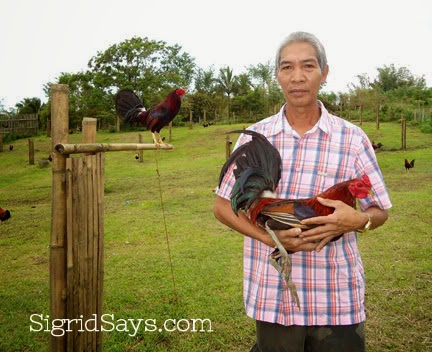
Aaron Gonzalez Game Farm and Breeding History
During my visit last year to the farm of breeder Aaron “Bagyo” Gonzales, it was no joke when his handler Rex “Butch” Gonzales said that the game farm was in the sky. Or at least very near it.
Butch, who is also Bagyo’s nephew, picked me up at my place in order to drive me to the game farm that bred the winners of the team, Las Altas Mega Ono.
Located at Purok Las Altas, Barangay Alangilan, Bacolod City, going to the Gonzales game farm is literally like going up on a stairway to heaven. The concrete road ends at the barrio proper so the rest of the ride to the game fowl heaven is a bumpy one.
Bagyo shares that he had always been a farmer, planting rice and corn in this same area. A high school graduate, he tilled the soil and used his produce and earnings to support his growing family.
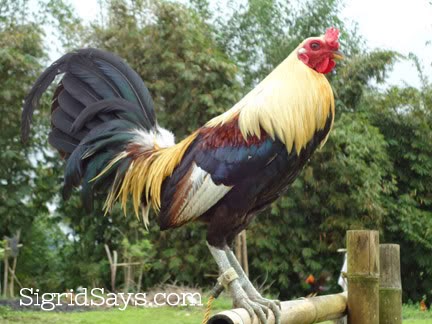
But the now-famous breeder is not new to the game of breeding and cockfighting. When he was a young boy, he used to go with his father Leopoldo whenever the latter would join hack fights (incero) in nearby villages. That was a long time ago and Bagyo has gone a long way from that.
In 1995, Bagyo Gonzales started working for the late Negrense breeder Generoso “Otic” Geroso. It was Otic who inspired, encouraged, and even provided the young Bagyo with materials and knowledge so that the latter can start breeding. Bagyo’s farm then became Otic’s satellite area. And Otic had used a lot of Bagyo’s produce in derbies.
Among Otic’s original lines that are now with Bagyo are the Sweater and Bruce Barnett. He has crossed them with Givens and the Ruble.
The Game Farm of Bagyo Gonzales
After a long, bumpy drive on a narrow road with tall grasses and tree branches flapping on the windshield and sometimes on my face, I was surprised to see a clearing at the end of the road. Then I was refreshed to see a nice homey, bungalow house and a carport. You would not expect such a suburban sight in what seems to be the middle of nowhere on top of a mountain.
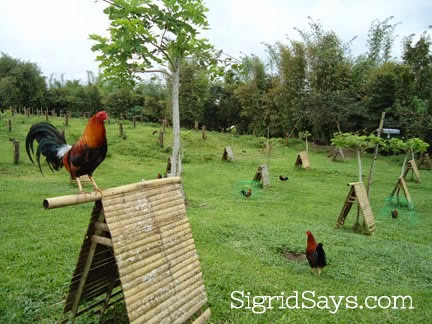
But being holed way up high in the mountain has its advantages, Butch Gonzales (Bagyo’s nephew and handler) reveals. Since they are so far away from the residential areas, they have not encountered problems related to game fowl theft. And if ever someone will try to break in the property, then he or she will be easily caught because of the difficult roads.
Though you will pass by a forest that looks like the one featured in the TV show Lost, Bagyo’s game farm is expansive, tidy, and dotted with corded stags and cocks everywhere. The more than 3-hectare rolling terrain was strategically divided for the breeding area, the range, several cord areas, and the conditioning area. At the end of a long walk down a hill is a sparring area. The soft spoken Bagyo, 56, roams up and down and around the farm everyday to check on the condition of his birds. And that also serves as his exercise.

The farm is planted with trees all around. It also has a lot of bamboo plants all over, which Bagyo says, were the ones he had planted when he was still single. The bamboo is very useful because its wood is used to make teepees, cages, and other necessary wooden fixtures in the farm. This is one way that they keep the farm sustainable, the breeder reveals.
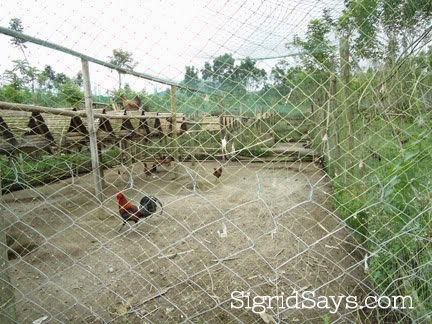
Despite producing more than 1000 birds per breeding season, there are only five people working in the farm, including Bagyo himself. His handler/gaffer, Butch, takes care of the selection, conditioning, and even gaffing. However, Butch is not exclusive to his uncle. He also accepts conditioning jobs for other breeders. And for the last 15 years now, Bagyo’s farm and entries are being financed by Manila businessman Emil Tiu, whom Bagyo met through Otic.
If the cards are right, Bagyo is thinking of expanding their production. That means that they will have to add to their seventeen (17) units of 30 feet x 20 feet breeding pens. They are just thankful that their water supply is free flowing in the farm and that they have a lot of available materials that they can use to minimize costs and keep the farm operations afloat.
Bagyo’s farm is now registered with the NGBA, GF-BAN, Rambolan 1 and Rambolan 2. But so far, the 2010 NGBA Stag Derby was their most memorable fight. Although they do win championships or get good scores in 4-Cock or 5-Cock derbies, this was the first time that they championed a big-time stag derby. Because of this feat, they are more confident to join more stag derbies this year, including the Bakbakan.
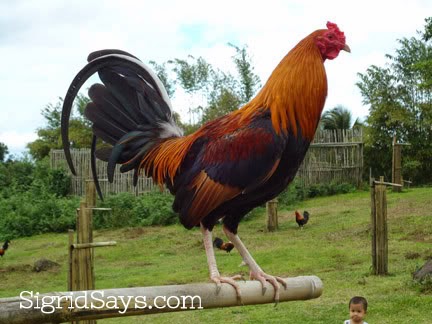
You may also like
TITA BETH’S PANCIT MALABON HAUS Now in Silay
Ann Co Cakes in Silay City Features Art, Culture, Cakes, and Good Food
Balaring Floating Restaurant: New and Improved Seafood Restaurant in Silay City
Amare Fashion Show in Bacolod by Nouveau Management a Success
Silay City Public Plaza Spectacular Christmas Display 2015